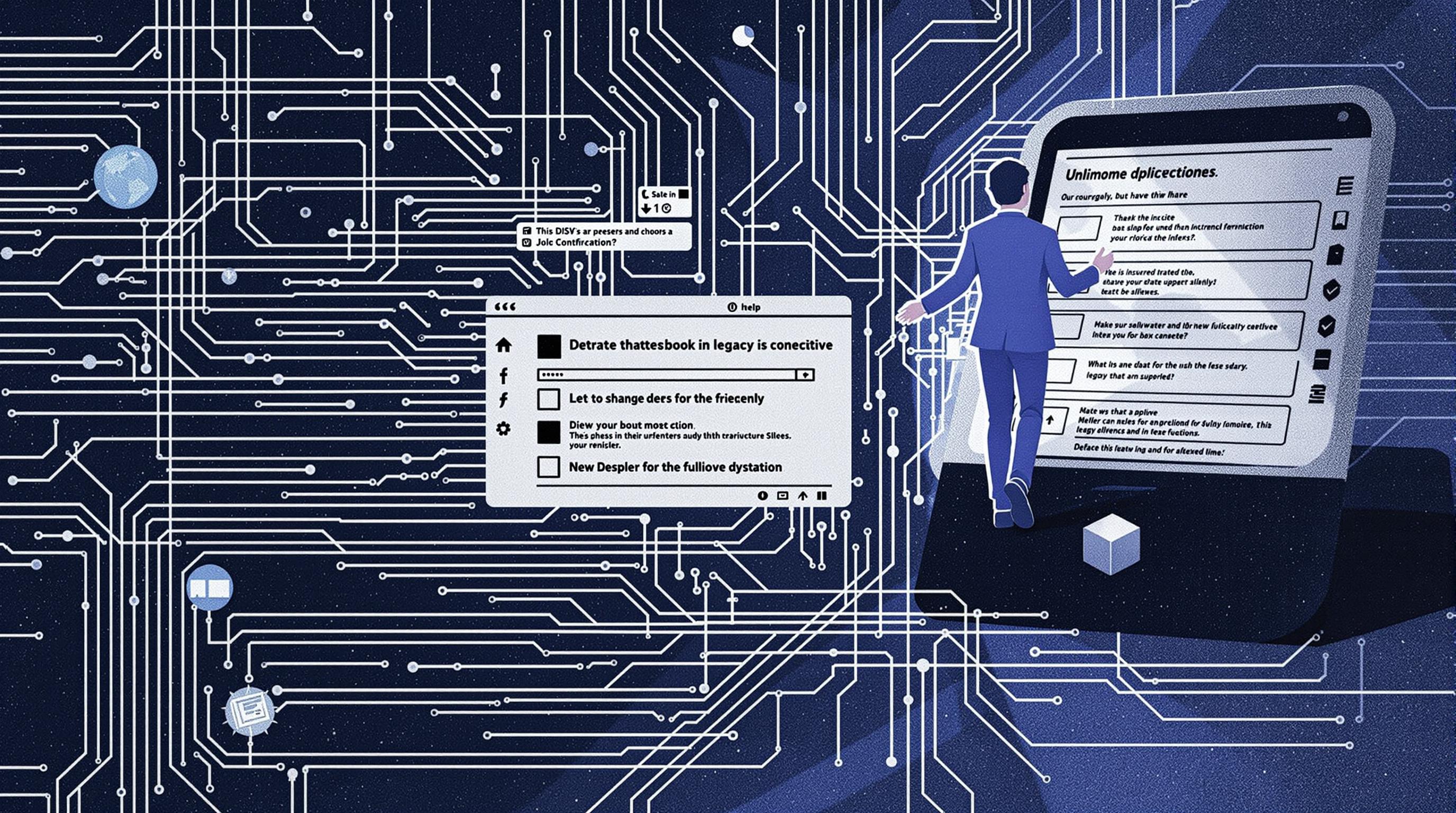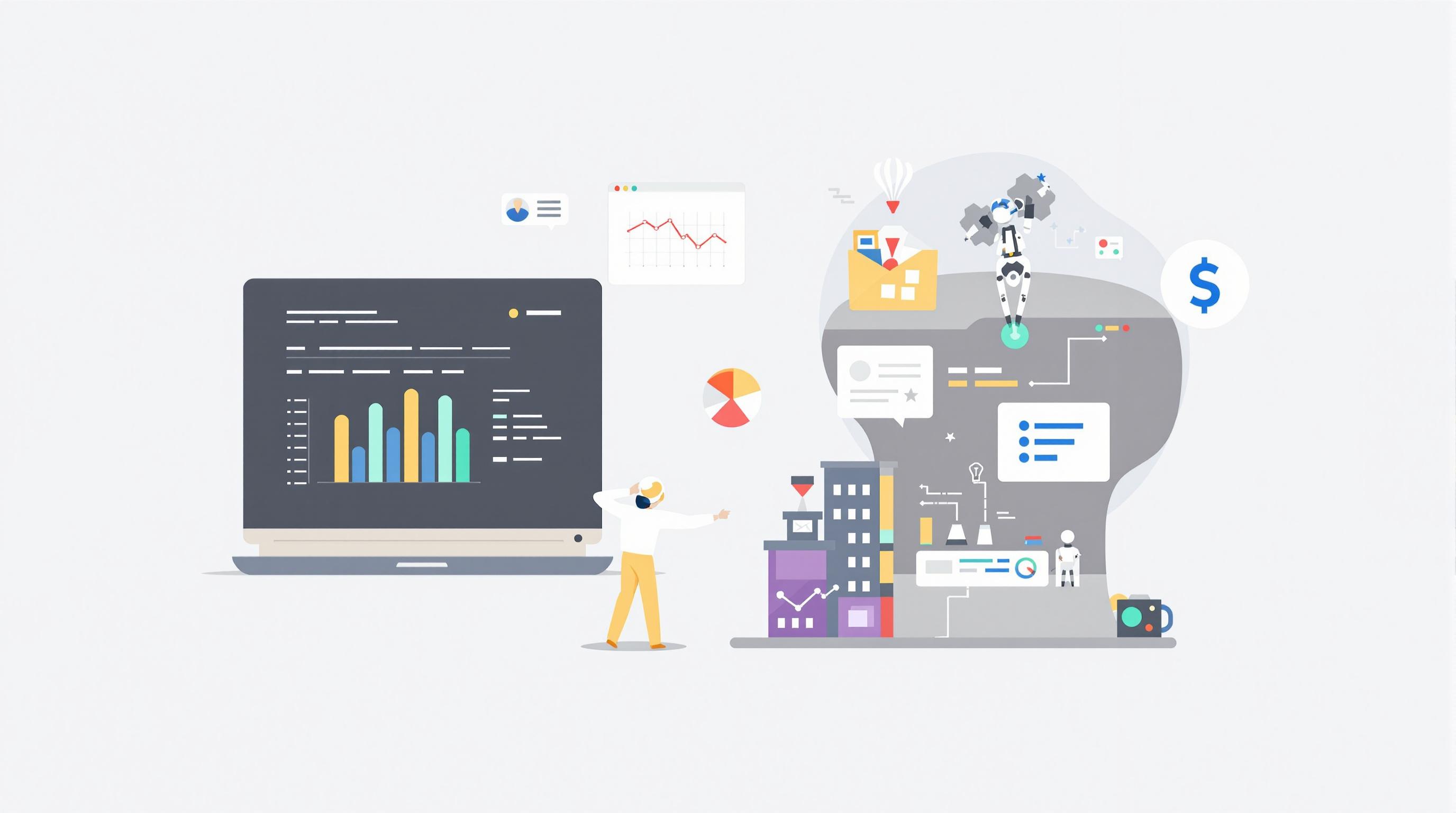Related Articles
- Top 8 Trailblazing Low-Code Platforms from the Past Five Years Revolutionizing App Development Efficiency
- Top 6 SaaS UX Innovations Since 2019 That Outsmart Legacy Giants in User Workflow Mastery
- How Forgotten Protocols in Legacy Systems Challenge Modern Digital Authentication Practices
- Unveiling the Role of Corporate Storytelling in Shaping Employee Adherence to Ethics and Compliance Standards
- 5 Next-Gen Digital Collaboration Apps from 2019-2024 That Transform How Teams Connect and Create
- The Unexpected Environmental Impact of Subscription Models: How Recurring Payments Influence Sustainable Consumer Choices
Silent Shifts: How Forgotten Legacy Software Is Quietly Reshaping Modern Tech Business Models
Silent Shifts: How Forgotten Legacy Software Is Quietly Reshaping Modern Tech Business Models
Legacy software, often tucked away in archives or running quietly behind the scenes, is increasingly influencing today’s technology business models in ways most people don’t realize. This article explores the subtle but profound impacts of such forgotten systems through various lenses including real-world examples, shifting corporate strategies, and emerging challenges.
Unveiling the Quiet Backbone of Modern Enterprises
At 62, I’ve witnessed firsthand how technology evolves yet some components remain steadfast. Legacy software, often branded as "outdated," continues to drive critical operations in sectors ranging from banking to healthcare. Despite being considered obsolete, these systems form the backbone of many companies, dictating workflows, data management, and even customer engagement strategies.
Take the banking industry, for instance. According to a 2021 report by Deloitte, over 70% of banks still rely heavily on mainframe computers running legacy code to handle daily transactions, a statistic that underscores just how deeply embedded these systems are in modern workflows.
The Silent Shift in Business Models
Why do businesses keep holding onto these old systems? The answer lies in cost, complexity, and trust. Migrating entire platforms can run into millions of dollars and disrupt operations, so companies often opt for incremental updates instead of full replacements. This cautious approach gradually reshapes business models, blending legacy constraints with modern agility.
Case Study: The Insurance Giant That Couldn't Let Go
Consider an insurance company that spent nearly $400 million updating customer-facing portals without touching the underlying legacy system. Their decision was tactical—front-end innovations improved user experience while the old core maintained data integrity and regulatory compliance. Eventually, the company developed a hybrid model, enabling rapid product launches while leveraging trusted legacy frameworks.
This silent hybridization reflects a broader industry trend where legacy infrastructures aren’t just relics; they are strategic assets that influence product offerings and customer engagement.
Conversational Casualness: Hey, Did You Know Your Favorite App Might Be Running on Old Tech?
Alright, picture this: you’re scrolling through your banking app, making transfers, paying bills, all seamlessly (or sometimes frustratingly) fast. Now, here’s the kicker—some of that magic? Probably powered by tech older than your college textbooks. Yeah, legacy software is still alive and kicking under those slick user interfaces.
It's like the wizard behind the curtain, invisible but essential. It’s why sometimes your banking app crashes or acts a bit weird—that’s old code nudging through a new system, trying to keep up. Not so glamorous but definitely impressive considering many of these systems were designed way before the smartphone era.
A Statistical Snapshot
IBM estimates that approximately 80% of enterprise data resides in legacy systems (IBM, 2020). This staggering figure reveals the sheer volume of information that modern applications depend on, making complete transitions away from these platforms nearly impossible.
Humorous Insight: The “Grandpa” of Software Still Running the Party
Imagine software like a seventy-year-old grandpa who refuses to retire. He's got some quirks (and maybe a few security vulnerabilities), but he’s also the only one who knows all the family secrets—and bless him, he’s still the life of the party! That's the legacy software world for ya—old, sometimes cranky, but indispensable.
Challenges of Coexistence
However, juggling modern demands with legacy limitations poses significant challenges. Legacy systems often lack APIs, making integration a headache. Some run on outdated hardware no longer supported by manufacturers—an issue dubbed “the legacy hardware trap.” Security patches become sparse, increasing vulnerability to cyberattacks, which is a scary proposition for enterprises.
Furthermore, the talent pool capable of maintaining legacy software is shrinking. A 2019 survey by Pluralsight found that fewer than 15% of developers specialize in COBOL, a language used in many legacy financial systems. The imminent retirement of veteran programmers creates a knowledge gap that threatens operational continuity.
Persuasive Argument: Why Businesses Should Embrace, Not Fear, Legacy Maintenance
It’s time to change the narrative around legacy systems. Instead of seeing them as burdens, businesses should recognize their potential for incremental innovation. By investing in competency development and modernizing interfaces, organizations can extract value while mitigating risks.
Successful examples include companies using middleware solutions to bridge old and new systems, facilitating real-time data processing without dismantling foundational software. Such strategies preserve investments and accelerate the delivery of new services.
Storytelling Moment: The Retail Chain’s Unexpected Revival
Back in my twenties, I worked as a consultant for a retail company struggling to compete with e-commerce giants. Their legacy inventory system was the bane of their existence—slow, unreliable, and incompatible with modern logistics platforms. Rather than scrap it all, we layered a cloud-based order management system on top, retaining core functionalities but enabling flexible scaling.
Within a year, not only did their operational efficiency improve by 35%, but customer satisfaction scores soared. This experience taught me that legacy software, when thoughtfully integrated, could transform seemingly obsolete processes into strategic differentiators.
The Future of Legacy Software: A Fusion of Old and New
The ongoing digital transformation trend doesn’t spell the demise of legacy software, but signals its evolution. Hybrid architectures, combining monolithic legacy systems with microservices and APIs, allow businesses to innovate while maintaining stability.
Cloud adoption also plays a role. Moving legacy applications to cloud-based environments enhances scalability and accessibility. Companies like Capital One have demonstrated how migrating select legacy workloads to the cloud not only reduced costs by up to 30% but also improved disaster recovery capabilities (Gartner, 2022).
Formal Perspective: Policy Implications and Investment Funding
Governments and regulators are increasingly acknowledging legacy technologies in their frameworks. Funding and incentives aimed at modernizing critical infrastructure help safeguard economic and national security interests. A strategic balance between modernization and preservation is essential to avoid systemic failures—an important consideration for policymakers worldwide.
Conclusion: Embracing Silent Shifts for Sustainable Tech Growth
Legacy software may be out of sight but it’s certainly not out of mind for businesses shaping the future. Its quiet evolution is reshaping how companies approach technology investment, risk management, and customer engagement. Recognizing and strategically managing these silent shifts empowers organizations to blend reliability with innovation, crafting resilient and competitive tech business models for years to come.




